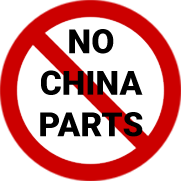Cup and Cone Bearings
Bearings are common machine components found in countless assemblies featuring moving parts. With their implementation, relative motion can be constrained as desired, and friction is mitigated between moving surfaces for increased efficiency and part health. Bearings can come in many different forms, each of which differs in their characteristics and functionality to facilitate the operations of a particular assembly. Cup and cone bearings are common to assemblies such as bicycle wheels, ensuring that they are able to function as intended.
On a bicycle wheel, a hub known as a cup and cone is present, allowing for ease of service. The cups are implemented in the shell of the hub, and the cones come in the form of conical nuts that are fastened onto the axle of the assembly. Steel balls are also present between both parts, rolling during operations. Through the combination of all components, the cup and cone bearing may be established with a bearing at each side of the hub.
With the presence of loose bearing ball components, one may adjust bearing tension with ease. The cup operates as the outer race of the bearing, pressing against the hub shell. The cone, meanwhile, is threaded onto the axle and serves as the inner race. While the hub bearings spin between the cup and cone, their tension may be adjusted by threading the cone down onto the axle before locking its placement with the use of a locknut. As a spacer is present between the cone and locknut, adjustments may be made with ease. When making any adjustment to the cup and cone bearing assembly, it is important to be careful in order to reduce friction and extend the lifespan of the component.
If the cones are overly screwed onto the assembly, they can begin to exert pressure on the ball bearing components. This can result in a high amount of friction during operations, causing the wheel to lose some of its ability to spin freely. While this will decrease overall efficiency, it can also speed up the wear of components. There are also issues that may arise when the cones are not sufficiently screwed, often leading to the shaking of the wheel on its bearings. While this is not optimal for standard operations, control may be lost to a degree as well.
Cone wrenches are a useful tool for adjusting cone bearings, and they may come in numerous sizes to accommodate different components. Generally, the process of loosening and tightening components is the same whether there is a freewheel or not. Some tools may also allow for adjustments to be made without having to remove the freewheel. For the various common adjustments that may be made to such assemblies, wrenches that are 13, 15, and 17 mm in size are best. Additionally, multiple wrenches may be required at one time to carry out operations while accommodating for the freewheel, locknuts, and other parts.
Whether you require cone bearings, freewheel components, cup bearings, or other various machine elements and hardware, there is no better alternative to NSN Axis. NSN Axis is a trusted distributor of all kinds of aircraft parts, offering competitive pricing on everything that we offer. Take the time to explore our vast catalog of parts as you see fit, and you may request a quote for your comparisons at any time through the submission of an RFQ form. If you are facing a time constraint and require parts quickly, we utilize our expansive supply chain network to expedite shipping for domestic and international customers. See why customers choose to steadily rely on NSN Axis for all their part procurement needs when you initiate the purchasing process with us.



